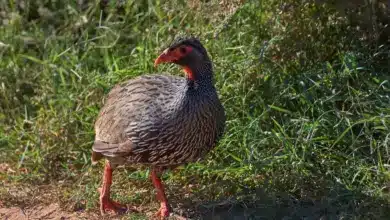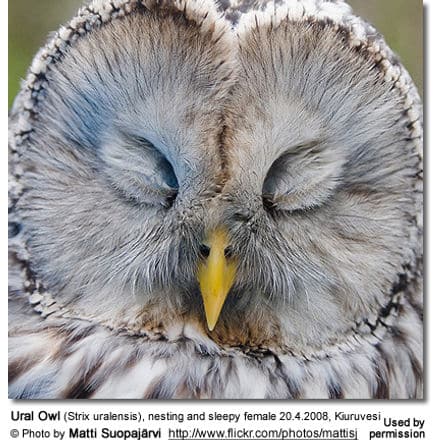Far Eastern Curlews or Eastern Curlew
The Far Eastern Curlew or Eastern Curlew (Numenius madagascariensis) is an uncommon, migratory shorebird with a declining population due to wetland destruction and change, pollution, and hunting.
As of 2006, only 38,000 of them are believed to exist globally.
Global Names
Chinese: ??? … Czech: koliha východní … Dutch: Siberische Wulp … German: Isabellbrachvogel … Danish: Østspove … Finnish: ohotankuovi … French: Courlis de Sibérie … Italian: Chiurlo orientale … Japanese: hourokushigi / ?????? … Norwegian: Østspove … Polish: kulik syberyjski … Spanish: Zarapito Siberiano … Slovak: hvizdák tmavochrbtý … Swedish: Orientspov
Distribution / Range
The Far Eastern Curlew breeds in northeastern Asia, including Siberia to Kamchatka, and Mongolia, nesting in marshy, swampy wetlands and lakeshores.
Most winter in coastal Australia, with a few heading to South Korea, Thailand, and New Zealand, where they stay at estuaries, beaches, and salt marshes.
During its migration, they commonly pass through the Yellow Sea.
After breeding, they move south for the Northern Hemisphere winter. They migrate by day and night at varying altitudes, usually along coasts approximately 300 ft (~100 m) from shore. Within Australia, juveniles don’t migrate, instead moving northward in winter.
They breed in the following countries:
- Eastern Russia, from the upper reaches of the Nizhnyaya Tunguska river east through the Verkhoyarsk mountains to Kamchatka, and south to Primorye and north-eastern Mongolia.
They winter in:
- Australia, Taiwan, Indonesia, Papua New Guinea and New Zealand
Non-breeding visitor to:
- Japan, North Korea, South Korea, mainland China, Hong Kong (China), Brunei, Bangladesh, Thailand, Vietnam, Philippines, Malaysia, Singapore (IUCN Redlist)
Description
The Far Eastern Curlew is a large, mostly brown-plumaged shorebird with a 43-inch (110 cm) wingspan and an average weight of 32 oz (900 grams).
The head and its long neck are a streaked dark brown. The chin and throat are whitish in color. It has dark brown eyes surrounded by prominent white eye-rings. It has a very long, dark-brown, down-curved bill with a flesh-colored base. The long legs and feet are bluish-grey.
The upper plumage is brown with broad pale olive-brown edging.
The tail is greyish-brown with narrow dark banding. The under plumage is dark brownish-buff, turning paler on the rear abdomen. It has fine dark-brown streaking on the foreneck and chest, which turns thicker arrow-shaped streaks and barring on the foreflanks.
The upper abdomen and rear flanks have finer dark streaking. The wings are whitish below, but look darker due to the fine dark barring.
Males and females look alike, except the female is slightly larger and has a longer bill.
Similar Species:
The Eastern Curlew is the largest curlew. It can be differentiated from other curlews by the plain brown underwings.
It has the longest bill of any shorebird.
It most resembles the Long-billed Curlew, except for its slightly larger size.
The Eastern Curlew has a much longer bill and legs than the similar Whimbrel, (Numensius phaeopus).
Breeding / Nesting
In the Northern Hemisphere, the Eastern Curlew usually nest from early May to late June. They usually nest in small colonies of two to three pairs.
The males sing their haunting calls and display flights to attract females and defend their territories
They typically nest on small mounds in swampy grounds. The nest is a shallow depression lined with dry grass and twigs.
The average clutch consists of 4 eggs.
They may not breed until they are three to four years old.
Diet / Feeding
The Eastern Curlews use the long, bill to probe for invertebrates (= animals without internal skeletons, such as small crabs, mollusks, larvae of beetles and flies, insects, earthworms, millipedes, snails, and spiders) in sandy and muddy flats, picking them from the surface or digging deep into the mud or sand with its long bill.
They slowly and deliberately stalk the prey. They may also take berries during the autumn migration.
They may feed alone; but typically, they congregate in large flocks.
They forage by day and night.
Calls / Vocalizations
They make the sharp, clear whistle, cuuue-reee calls, often repeated.
Beauty Of Birds strives to maintain accurate and up-to-date information; however, mistakes do happen. If you would like to correct or update any of the information, please contact us. THANK YOU!!!




